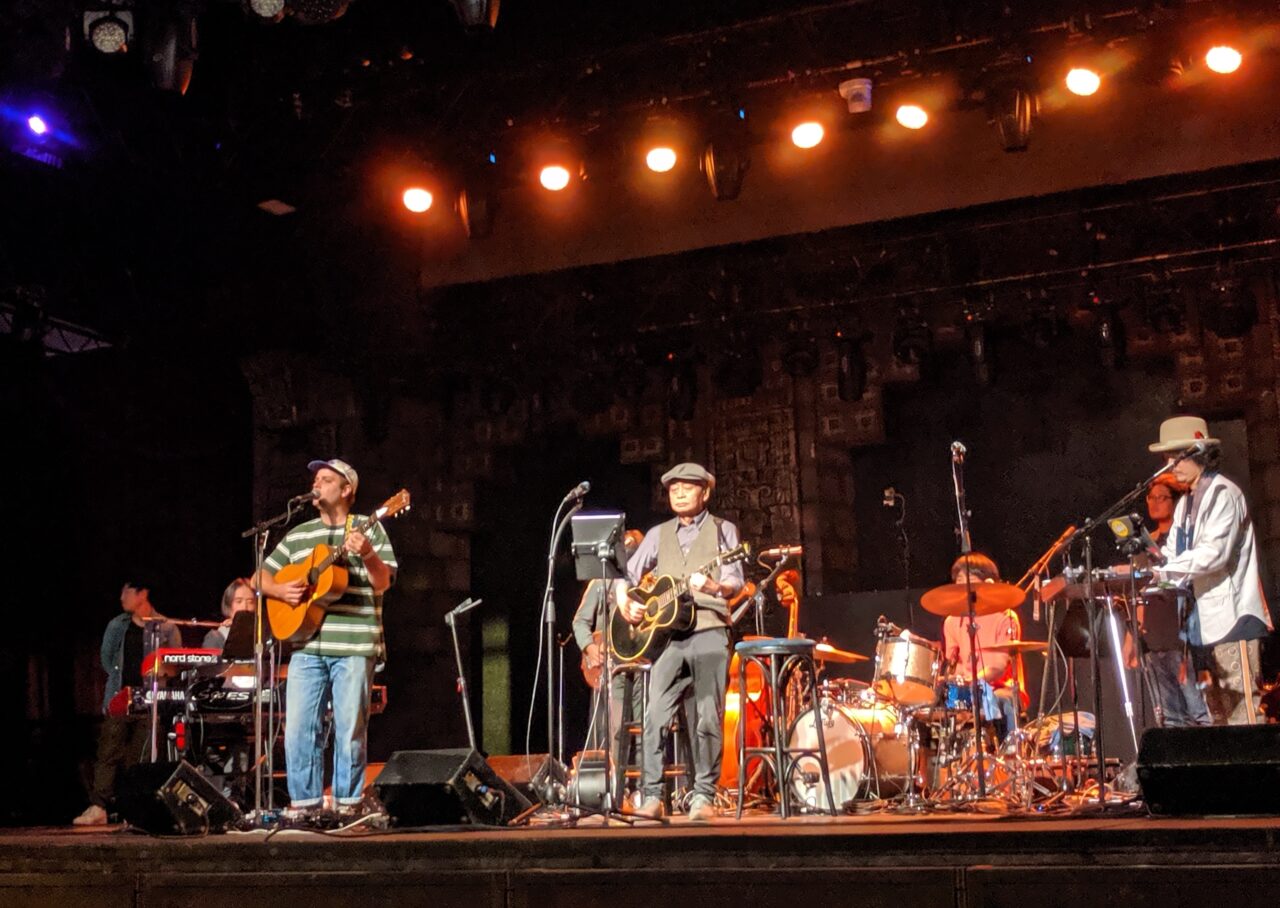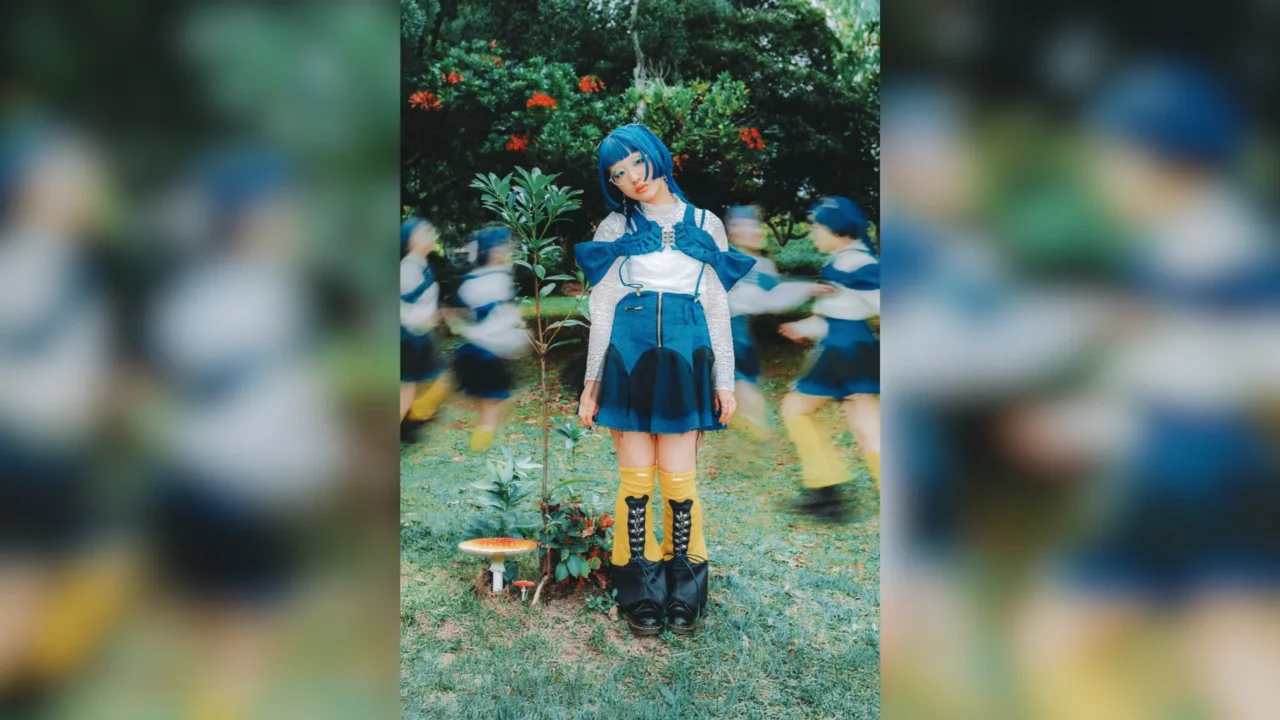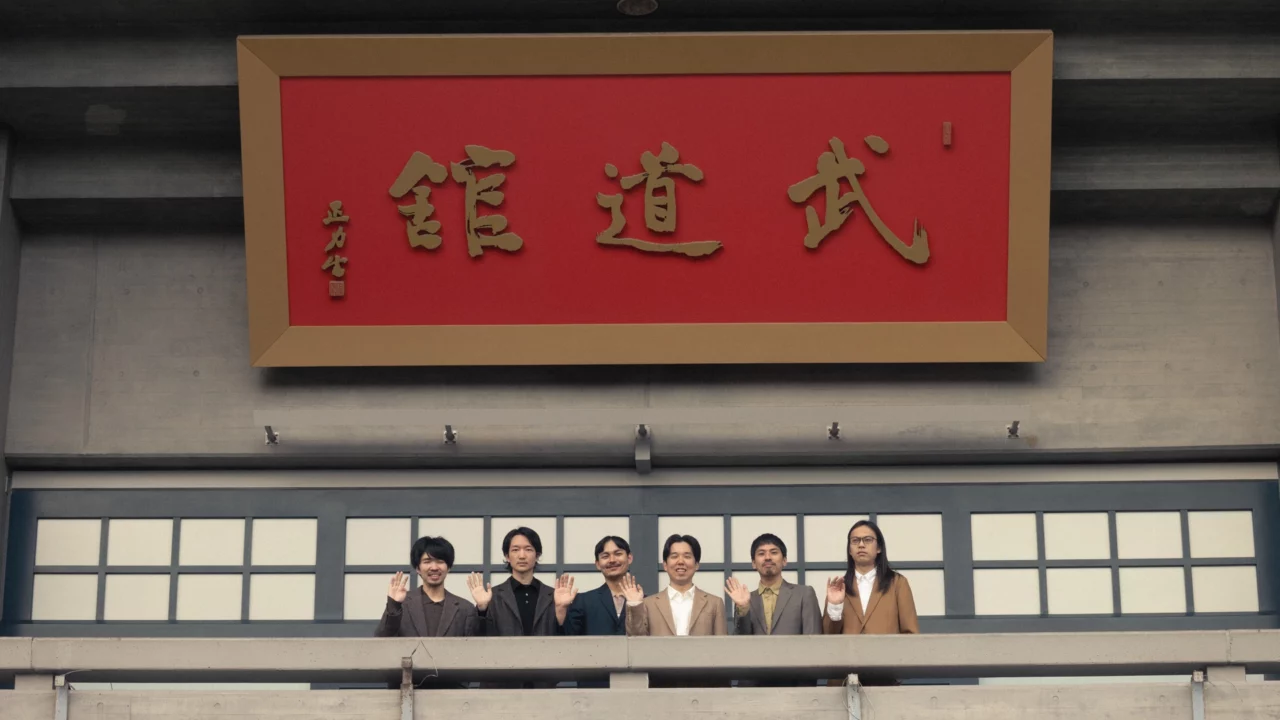Celebrating the release of HOSONO HOUSE COVERS, a fresh reimagining of Haruomi Hosono’s landmark album, we present Revisiting “HOSONO HOUSE,” a short series delving into the global impact of Hosono’s work.
In the final installment, Yuji Shibasaki, reflecting on Mac DeMarco’s contribution to the cover album, unpacks the journey of HOSONO HOUSE as it captivated international audiences and musicians. Through this exploration, he considers how the surrounding musical landscape shaped its widespread acceptance.
[Editor’s Note] This series and article were created at the end of 2024. Tragically, in January 2025, the Los Angeles music community, including Stones Throw Records—which co-produced HOSONO HOUSE COVERS—was severely impacted by the catastrophic wildfires in California. John Carroll Kirby, who also participated in the project, shared his own experience with the disaster on social media. Our deepest sympathies go out to those affected.
INDEX
Mac DeMarco’s Decade-Long Admiration for Haruomi Hosono
The moment that sparked my awareness of the international reception of HOSONO HOUSE was over 10 years ago when I watched an episode from the YouTube video series What’s In My Bag?, produced by the American record store Amoeba Music.
In this series, current artists visit the store and introduce items they personally select, alongside their comments. The series later went on to win a Webby Award, becoming beloved by many music fans up to this day. I, too, have been a fan for a long time, checking out the latest episodes whenever I had the chance.
It was in the September 9, 2014, episode of What’s In My Bag? that indie musician Mac DeMarco appeared, gaining even more attention following the release of his third album Salad Days.
Watching Mac DeMarco casually chat while holding Bruce Springsteen’s iconic album The River (1980) in front of Amoeba Music’s San Francisco store, I was almost convinced that the inspiration behind the artwork of his previous album 2 (2012) was indeed The River. However, according to DeMarco, the reference actually comes from somewhere else.
That’s when he mentioned HOSONO HOUSE—a choice I hadn’t anticipated! Upon hearing this, I could clearly see the similarities in the color scheme and font style… But still, HOSONO HOUSE as a reference? What a perfect and unexpected pick.
At the time, I had no idea about his later activities, such as the 2018 Japanese cover of “Honey Moon” or his guest appearance at Hosono’s Los Angeles performance in 2019. For me, the combination of HOSONO HOUSE and a young indie rock artist seemed incredibly fresh and

Musician. Hosono made his debut in 1969 as a member of April Fool. In 1970, he co-founded Happy End, and in 1973, he launched his solo career while also performing as part of Tin Pan Alley. In 1978, he formed Yellow Magic Orchestra (YMO), contributing to the pop music industry as a songwriter, producer, and label owner.
Following YMO’s disbandment, Hosono explored world music, ambient, and electronica, engaging in composition, production, and film scoring. In 2019, celebrating the 50th anniversary of his musical career, he released HOCHONO HOUSE, a reimagining of his first solo album, HOSONO HOUSE (1973).
In 2024, marking his 55th anniversary in music, the tribute album HOSONO HOUSE COVERS, featuring 13 artists, was released.
According to an interview published in the Pen magazine’s Haruomi Hosono special issue (January 2025), Mac DeMarco has been a “fanatic” of Hosono’s music since his teenage years when he first discovered it on video-sharing sites. Considering this, it’s easy to sense DeMarco’s passionate spirit in his simple acoustic cover of “Boku wa Chotto” on HOSONO HOUSE COVERS, a choice that reflects his long-time admiration for Hosono.
In the same article, he also mentions:
At that time, I was really into Americana—artists like James Taylor, Neil Young, and the Tin Pan Alley scene. It was during this period that a friend introduced me to Bara to Yajū (Roses and Beasts), and I found its mix of Americana influences with Hosono’s distinctive harmonies incredibly captivating.
From Pen January 2025 issue, special feature “Haruomi Hosono and His Companions,” p68
Note: This likely refers to the popular songs produced in the Tin Pan Alley of Manhattan, New York, where many songwriters gathered, or the so-called “Brill Building Sound,” which continues that tradition.

INDEX
Key Elements That Contributed to Haruomi Hosono’s Recognition in America
Among the tracks on HOSONO HOUSE, “Bara To Yaju” (Roses and the Beast) seems to be particularly significant when considering the album’s reception abroad.
In a column for Music Magazine (December 2024 issue), writer Ryohei Matsunaga, who also participated in this short series, recalls visiting Amoeba Music in Hollywood about ten years ago. He witnessed a female DJ playing “Bara To Yaju” in the store.
As Matsunaga suggests, the DJ likely played it as a kind of “cool funk.” Indeed, when viewed from this perspective, the groovy “Bara To Yaju” stands out as an incredibly captivating track, even within the album.
Another important example that supports this interpretation of “Bara To Yaju” comes from UK DJ and “Japan Blues” digger Howard Williams, who curated the compilation Lovin’ Mighty Fire – Nippon Funk * Soul * Disco 1973-1983 for the UK label ACE. In this compilation, “Bara To Yaju” is included, positioning the track as part of “Nippon Funk.”
When discussing the “discovery” of Hosono’s music, one must not forget the presence of Devendra Banhart, the singer-songwriter who grew up in Venezuela and is now based in LA.
In the 2017 book Folk Roots, New Routes (Shinko Music Entertainment), Banhart speaks with his idol, Hosono, and has often expressed his admiration for him, including covering “Sports Men” on stage.
Devendra Banhart’s cover of “Sports Men.” The original track is from Haruomi Hosono’s Philharmony (1982).
According to the aforementioned conversation and an interview I conducted (published in Record Collectors’ Magazine, December 2019), Devendra Banhart’s discovery of Haruomi Hosono’s music dates back to the early 2000s. A key figure in this journey was Andy Cabic, a longtime friend since Banhart’s move to San Francisco and a member of the band Vetiver.
Banhart recalls that Cabic had been fascinated by Japanese music from an early stage, even traveling to Japan well before the vinyl resurgence to dig for records. A true connoisseur, Cabic introduced Banhart to various Japanese artists, including Maki Asakawa—another musician who would later garner a devoted following overseas.
The two friends often mused about the idea of an artist who combined the essence of Brian Eno, John Lennon, David Bowie, and Hoagy Carmichael. Then, one day, Cabic excitedly declared, “I’ve found exactly that person!”—and that person was none other than Haruomi Hosono.
Banhart later paid homage to Hosono with the song Kantori Ongaku, featured on his 2019 album MA. The title is a playful romanization of “Country Music” in Japanese, inspired by a line from Hosono’s Boku wa Chotto. True to its name, the track carries a strong country influence, evoking the sound and spirit of HOSONO HOUSE.
Looking back at these various developments, it becomes clear that the rising attention toward Haruomi Hosono and HOSONO HOUSE among younger generations of artists and listeners was deeply rooted in connections across California and the broader U.S. West Coast.
INDEX
From Underground Influence to Grammy Recognition: Hosono Haruomi’s Expanding Global Reach
The 2018 reissue of HOSONO HOUSE—alongside four other Haruomi Hosono albums—found its home with Light In The Attic, a label bridging Seattle and Los Angeles, a fact that speaks volumes.
This is the same label that kicked off its Japan Archival Series with Even A Tree Can Shed Tears: Japanese Folk & Rock 1969-1973 (2017), a compilation featuring Hosono’s Boku wa Chotto. Through this series, Light In The Attic has been a driving force in the global rediscovery of city pop and environmental music, reigniting appreciation for Japan’s vintage folk-rock legacy.
Yosuke Kitazawa, the producer responsible for these releases, was raised in California by Japanese parents and has played a pivotal “hub” role in introducing Japanese music, particularly Hosono’s works, to global audiences.
Later, he co-founded Temporal Drift, a label dedicated to reissuing Japanese music while also producing albums for contemporary Japanese artists like Yuma Abe and Takuro Okada (both of whom contributed to HOSONO HOUSE COVERS). Through his efforts, he continues to connect the indie music scenes of Japan and the West.
Given this context, it’s no surprise that Stones Throw Records, another influential LA-based label, became deeply involved in the creation of HOSONO HOUSE COVERS, with many of its artists joining the project.
The 2018 international reissues of Hosono’s albums, including HOSONO HOUSE, were paired with a surge of English-language coverage, which played a key role in amplifying the album’s recognition.
Once beloved by a niche group of hipsters, HOSONO HOUSE began to expand its reach in the wake of this attention. With the success of Hosono’s 2019 U.S. tour and its warm reception, the album became firmly established as a new “standard” for a fresh wave of creators and listeners.

A perfect embodiment of this shift can be found in Harry Styles’ 2022 album Harry’s House, which won both “Album of the Year” and “Best Pop Vocal Album” at the 65th Annual Grammy Awards. Styles openly discussed how the album’s title was directly inspired by HOSONO HOUSE and how Hosono’s work served as a major influence during the creative process, a detail that many fans are now familiar with.
Alongside these developments, Hosono’s influence and the popularity of HOSONO HOUSE have transcended American and British artists, spreading across diverse musical landscapes and regions. This is evident in the inclusion of Korean indie band SE SO NEON and the French-born (now LA-based) Pearl & the Oysters in the cover compilation.
Both bands take fresh approaches to the songs—SE SO NEON offers a lo-fi reinterpretation of “Party” with a minimalist arrangement inspired by the original “Rock A Bye My Baby,” while Pearl & the Oysters reimagine “Koi wa Momoiro” through a sophisticated, bedroom pop lens. Both show a deep, thoughtful engagement with the music, moving beyond the typical folk-rock interpretations to truly absorb and reflect the essence of the songs.
Based on feedback from platforms like Discogs and Rate Your Music, it’s evident that HOSONO HOUSE has captured the attention of a diverse group of listeners. While it may not make waves on the charts or in mainstream media, there is undoubtedly a much broader and more dedicated following for the album.
INDEX
What Contributed to the Enduring Popularity of HOSONO HOUSE Today?
Still, what remains thought-provoking is why such a situation has come to pass.
As we’ve observed, the passionate recommendations and educational efforts of trailblazers undoubtedly played a key role. But it’s also clear that the rapid evolution of online listening platforms and the global spread of information have been pivotal in bringing about this change.
In addition, this situation coincides with the growing relativity of North America’s entertainment industry dominance and a surge in the visibility of cultural localities worldwide. This shift has led to an increased interest in past and present music from East Asia, fueled by a “post-colonial” shift in consciousness among progressive individuals in Western entertainment circles. This transformation speaks to a larger, global rethinking of cultural boundaries.
Author’s Note: On a related note, it’s important to acknowledge that these movements to “discover” Japanese music might also be influenced by forms of Orientalism or a gaze that essentializes “Japan” and “Asia” as regions inherently tied to cultural hybridity. For a deeper exploration of this, I encourage you to refer to Chapter 4 and beyond in my book What is City Pop? (external link in Japanese)
Yet, there’s likely a deeper, more intrinsic reason at play here. The magic of HOSONO HOUSE lies in how its unique sound and atmosphere are perfectly intertwined with the pulse of today’s music landscape.
In a world where maximalist sounds dominate the pop mainstream, HOSONO HOUSE stands as a quiet yet intimate counterpoint, capturing a raw sense of closeness. This intimacy, rooted in Japan’s home recording traditions, may be drawing in those who feel disconnected from the ever-growing “noise” of the modern world.
This shift aligns with the larger trend of introspection and personal reflection accelerated by the pandemic — which also explains the rising interest in Hosono’s ambient works. For those enraptured by HOSONO HOUSE, the album’s story — recorded in the countryside of Sayama, Saitama, far from the hustle and bustle of city life with close friends — likely strikes a deep, comforting chord.






















